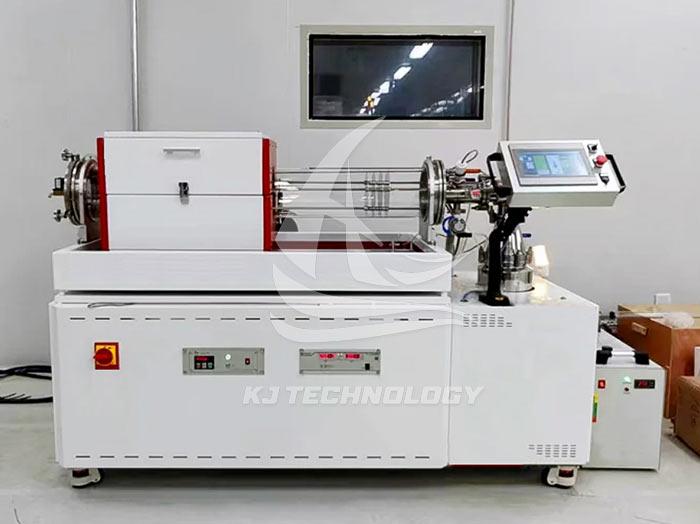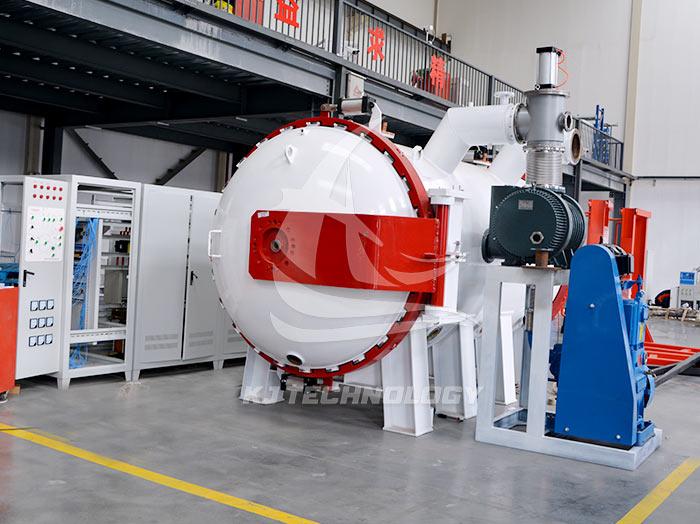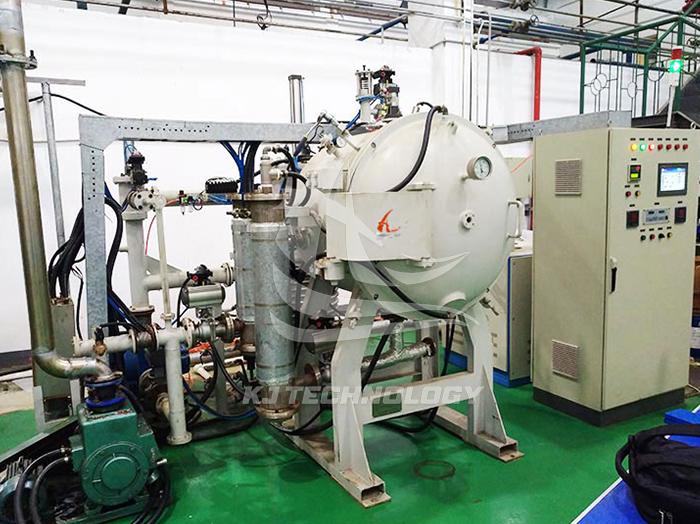Laboratory graphite vacuum furnace
 08-06-2025 Author: KJ technology
08-06-2025 Author: KJ technology
The laboratory graphite vacuum furnace is a high-temperature treatment device designed specifically for laboratories. Its core features, working principles, application areas, and operation and maintenance points are as follows:
1. Core Features
high temperature performance
Adopting a graphite heating system, the maximum working temperature can reach 1600 ℃, suitable for high-temperature processes such as metal sintering and ceramic heat treatment.
Graphite material has excellent conductivity and high temperature resistance, and generates resistance heat when current passes through, achieving rapid heating.
High vacuum degree
The maximum vacuum degree can be as low as 5 × 10 ⁻⁶ mbar, effectively preventing sample oxidation or contamination and improving material purity.
The protective atmosphere pressure can be adjusted (10-1000mbar), supporting inert gas (such as argon) or reactive gas environments.
Dual mode control system
Supports manual control and visual automatic control based on Siemens PLC+WINCC, with flexible operation and accurate data recording.
Safety and stability
Equipped with a closed-loop water cooling device (flow rate ≥ 40L/min, inlet water temperature 23 ℃) to ensure long-term stable operation of the equipment.
The sealing device is complete to prevent gas leakage and ensure experimental safety.
2. Working principle
Heating mechanism
The current passing through the graphite electrode generates resistance heat, and the temperature inside the furnace chamber rapidly increases.
By adjusting the current size, the furnace temperature can be precisely controlled to meet different process requirements.
Construction of Vacuum Environment
Start the vacuum pump and extract air from the furnace to the desired vacuum level.
The vacuum gauge monitors pressure in real-time to ensure stable experimental conditions.
atmosphere control
Inject protective gas (such as argon) through the intake system to regulate the atmosphere pressure inside the furnace.
The atmosphere control system can accurately control the gas flow rate to meet specific reaction requirements.
3. Application Fields
Metal manufacturing industry
Used for heat treatment, alloying, melting and other processes of metal materials to enhance material properties.
Ceramic manufacturing industry
Realize sintering and crystallization of ceramic materials to improve product density, hardness, and thermal stability.
Electronic industry
Preparation of semiconductor materials, graphitization treatment, sintering, etc., to optimize the performance of electronic components.
Chemical industry
Used for pyrolysis, polymerization reactions, and surface modification of organic materials to improve product quality.
material science
Synthesize new materials, study physical and chemical properties, and promote material innovation.
Environmental Protection and Food Processing
Waste heat treatment, food sterilization and drying, etc., expand the application boundaries.
4. Key points of operation and maintenance
Operating procedures
Preparation stage: Check the power cord, cooling water, sealing, prepare samples and tools.
Sample loading stage: Select a suitable graphite boat, evenly place the sample, and avoid uneven heating.
Vacuum pumping stage: Start the vacuum pump, monitor the vacuum level, and ensure no leakage.
Heating stage: Set the temperature and time, monitor the heating curve to avoid rapid heating and damaging the sample.
Cooling stage: Cool according to process conditions and closely monitor temperature changes.
End stage: Take out the sample, clean the furnace, turn off the power and water sources.
Maintenance
Cleaning the furnace: Regularly clean the accumulated ash and residue to keep the furnace clean.
Check electrical components: Ensure that power cords, indicator lights, switches, etc. are working properly.
Check heating elements: replace damaged or aged graphite heating rods in a timely manner.
Check the atmosphere control system: calibrate the gas source and sensors, adjust the control parameters.
Check the cooling system: Clean the cooling water pipes to prevent blockage or leakage.
Check the sealing device: replace worn or aged seals to ensure sealing.
Calibrate temperature control system: Regularly use standard thermometers for calibration, or contact professional technicians.
Safety precautions
Wear protective equipment (such as gloves, masks, goggles) during operation to avoid burns or inhaling harmful gases.
It is strictly prohibited to touch high-temperature components to prevent burns.
It is strictly prohibited to adjust equipment parameters arbitrarily to ensure experimental safety.
Regularly inspect the equipment, promptly handle any abnormalities found, and prevent the malfunction from escalating.








